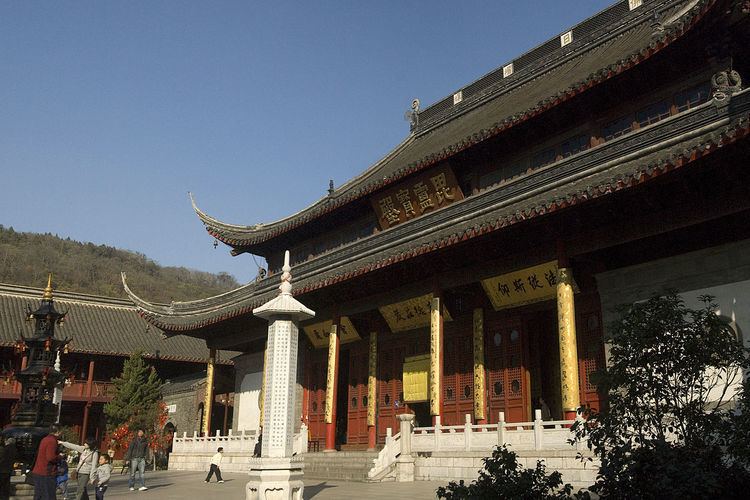Completed AD 489 | Country China Opened 489 AD Phone +86 25 8576 1831 | |
 | ||
Similar Qixia Mountain, Guoqing Temple, Jiming Temple, Lingyan Temple, Linggu Temple | ||
Qixia Temple (Chinese: 栖霞寺; pinyin: Qīxiá Sì) is a Buddhist temple located on Qixia Hill in the suburban Qixia District in Nanjing, Jiangsu province, People's Republic of China, 22 kilometres (14 mi) northeast of downtown Nanjing. It is one of Nanjing's most important Buddhist monasteries.
Contents
Qixia temple
History
Built in AD 489, the 7th year of the Yongming (永明) era during the South Qi Dynasty, the temple is known for its large collection of Chinese Buddhist visual art and sculptural art in the grounds. These consist of pagodas, murals and artwork that date back to the 10th century.
Near the temple site and situated on the slopes of Qixia Hill, is the "Thousand Buddha Caves", a grotto containing many Buddhist sculptural works of art.
Buddha's Relics Pagoda
The Buddha's Relics Pagoda is in the southeast of Qixia Temple. It was built in 601 and destroyed in the Tang Dynasty. In 945, it was rebuilt by Southern Tang Dynasty emperor Li Jing.
The pagoda has a five-story, octagon-shaped structure. It is 18m high and perched on a two-story stylobate carved with waves and a dash of fish and Chinese flowering crab apples.
Hsing Yun
Hsing Yun, the founder of Taiwan's Fo Guang Shan, was tonsured at Qixia Temple in 1941. He was a disciple of Master Zhikai and studied for several years at the Qixia Vinaya School.
